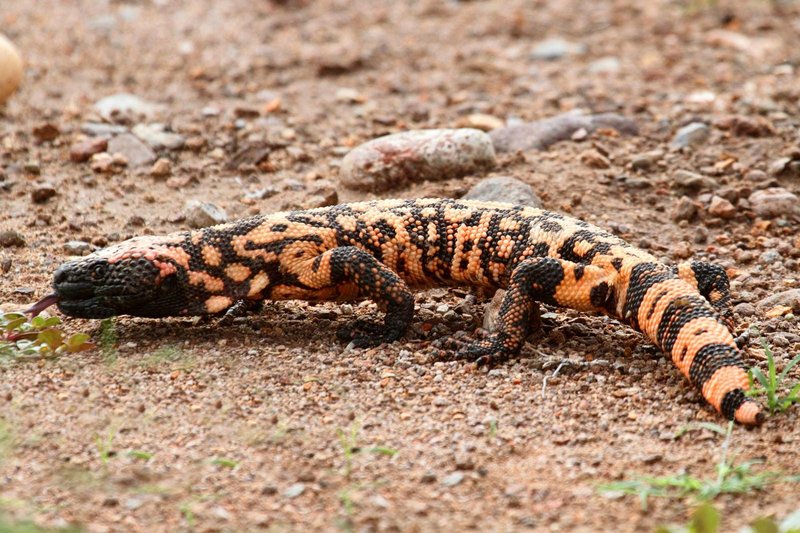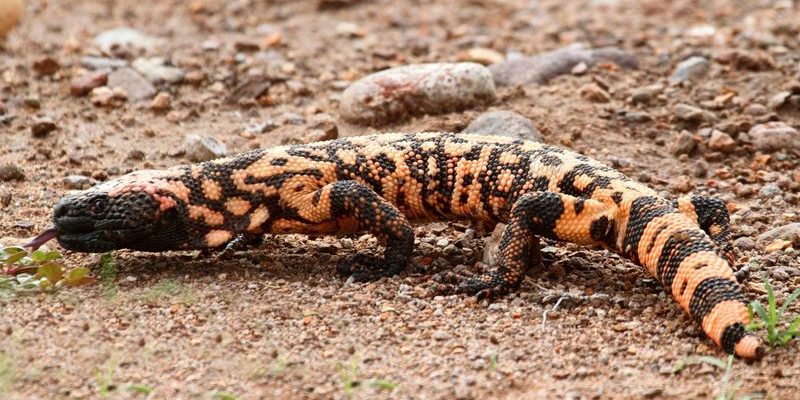
Imagine walking through the desert, feeling the heat of the sun, and spotting this slow-moving beauty basking on a rock. But as enchanting as the Gila monster is, it’s not just another creature to admire from afar. It’s a living example of how delicate our ecosystems can be and how conservation efforts play a vital role in safeguarding our natural world. So, let’s dive deep into the status of the Gila monster and explore the conservation efforts aimed at preserving this remarkable reptile.
What Is the Gila Monster?
The Gila monster (Heloderma suspectum) is one of the few venomous lizards in the world, which definitely makes it a standout in the reptile kingdom. With a hefty body that can reach up to 2 feet long, it’s a slow mover that spends most of its time hiding in burrows during the hot parts of the day. When you see one up close, its markings can look like an artist splashed paint on its skin—vivid patterns of orange, yellow, and black create a striking appearance.
These lizards primarily inhabit deserts and semi-arid regions. They have a unique diet that consists mainly of eggs, small mammals, and birds. What’s fascinating is that their venom isn’t meant to kill but to help them digest their prey. When they bite, their venom can cause swelling and pain, which is why it’s best to admire them from a safe distance!
Are Gila Monsters Endangered?
You might be wondering, “So, is the Gila monster endangered?” The short answer is yes, but let’s unpack that. As of now, the Gila monster is classified as a vulnerable species by the International Union for Conservation of Nature (IUCN). This means that their populations are declining and they are at risk of becoming endangered if the threats they face aren’t addressed.
Several factors contribute to their vulnerable status. Habitat loss due to urban development, agriculture, and climate change are major concerns. Additionally, illegal collection for the pet trade also poses a significant threat to this species. With their unique appearance, it’s no wonder some people might be tempted to keep them as pets, but this practice can severely impact wild populations.
Threats to the Gila Monster
The Gila monster faces several challenges that threaten its survival. Let’s break down some of the most pressing issues:
- Habitat Loss: As cities expand and farmlands increase, the natural habitats of the Gila monster are shrinking. This loss of space makes it harder for these lizards to find food and shelter.
- Climate Change: Changes in climate can affect the availability of food sources and suitable habitats. Increased temperatures and changes in rainfall patterns can disrupt their natural lifestyle.
- Human Encroachment: More people in areas where Gila monsters live means more chances for these lizards to be accidentally harmed or killed.
- Illegal Pet Trade: While these lizards are fascinating, collecting them for pets can lead to significant declines in wild populations, putting even more pressure on their numbers.
Conservation Efforts for the Gila Monster
Now that we understand the threats, let’s look at how conservationists are stepping in to help. Efforts to protect the Gila monster involve a mix of legal protection, habitat restoration, and public education.
One major step is the legal protection these creatures receive under various laws. In some states, it’s illegal to collect Gila monsters without a special permit, which helps curb the illegal pet trade. There are also initiatives in place to monitor their populations, providing valuable data for conservation planning.
Additionally, organizations and agencies are working to restore habitats that have been lost. This might involve replanting native vegetation or creating protected areas where these lizards can thrive without human interruption.
Finally, raising public awareness is crucial. Many conservation groups are dedicated to educating the public about the Gila monster and its role in the ecosystem. By fostering a sense of appreciation for these lizards, they hope to inspire people to support conservation efforts.
Research and Monitoring
Ongoing research plays a vital role in understanding and protecting the Gila monster. Scientists are actively studying their behaviors, habitats, and population dynamics. This research helps identify the best strategies for conservation, ensuring that efforts are effective.
For instance, tracking the movements of Gila monsters through technology allows researchers to gather data about their habitat preferences and interactions with the environment. By understanding their needs better, conservation plans can be tailored to create safe spaces in the wild.
Also, monitoring population trends helps highlight where interventions might be needed most. This data can push for more protective measures if numbers continue to decline.
How Can You Help Gila Monsters?
You might be thinking, “What can I do to help?” There are several ways to contribute to the conservation of Gila monsters, even if you don’t live in their native regions.
- Support Wildlife Organizations: Consider donating to or volunteering with groups dedicated to reptile conservation and habitat restoration.
- Spread Awareness: Share what you learn about Gila monsters with friends and family. The more people know about these lizards, the more support conservation efforts can gain.
- Respect Wildlife: Always appreciate wildlife from a distance. If you see Gila monsters in the wild, enjoy their beauty without disturbing their habitat.
- Participate in Local Conservation: Engage in local conservation efforts in your area. Whether it’s through clean-up events or habitat restoration, every bit helps!
The Future of the Gila Monster
The future of the Gila monster depends on our collective efforts to protect its habitat, monitor its populations, and promote awareness. While the challenges are significant, there’s hope. With continued research and commitment from conservationists and communities, we can ensure that this unique lizard continues to thrive in the deserts where it belongs.
As we admire the beauty of the Gila monster, let’s remember our responsibility to protect it. After all, every creature plays a role in our ecosystem, and losing even one can have ripple effects we may not fully understand. The Gila monster’s story is a reminder of the challenges facing our wildlife and the importance of conservation efforts—because preserving our planet’s treasures is a task we all share.

